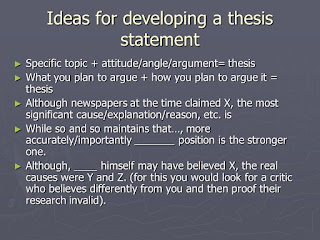Of course, an essay usually requires a few revisions once the first draft is complete. Let's look at the professor's comments on Lois' first draft:
As you can see, Lois needs to provide more evidence to support her thesis. Here are a few different ways to revise a draft:
As you can see, Lois needs to provide more evidence to support her thesis. Here are a few different ways to revise a draft:
- Take a break and come back to it - it is always important to read the draft a few times, but it is better to take a break and read it the next day. You are more likely to notice subtle differences when you have a fresh outlook
- Read it out loud - oftentimes you catch incorrect grammar or awkward phrasing better if you read it aloud to yourself
- Have a friend read it - it is always great to get a second opinion on what you wrote. Bonus: have your friend read it aloud and maybe you will notice wording that you want to change
- Run it by a teacher - if your paper is for a class, many teachers give students the opportunity to turn in a first draft. Always take this opportunity because it gives you an idea of whether you are on the right track, and the teacher might have a great idea you never considered
- Take it to the Writing Center - many high schools and universities have a writing center with trained students who can sit down with you for a bit and give you advice on your paper. This is a great opportunity to really talk about your paper with someone else and make sure that your transitions are effective
The last point to note is that a paper is never truly finished. You could revise it ten times and it still would not be done. By then, it is certainly ready to be turned in and read by an audience, but it is not finished. If you think about it, our world is constantly changing. New data comes in every day. People change every day. You might feel differently about a topic from one day to another, which could alter the tone and content of your writing. So in essence, a piece of writing is never finished because it can always be altered. Just some food for thought before your next project.
Have you tried the FREE PaperRater automated proofreader yet? What are you waiting for?












